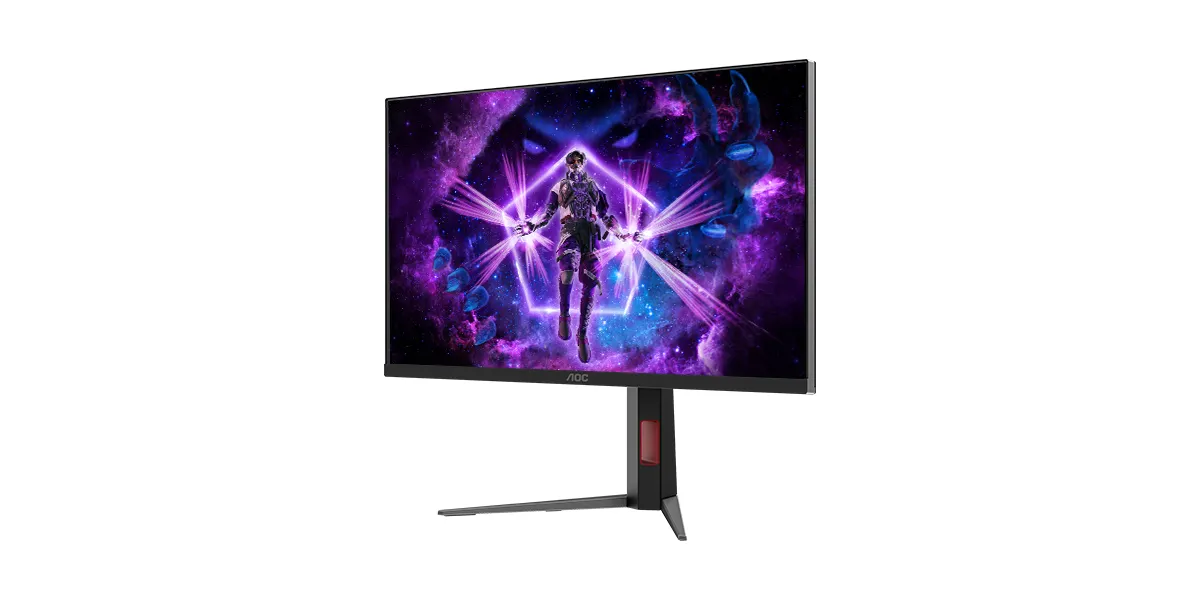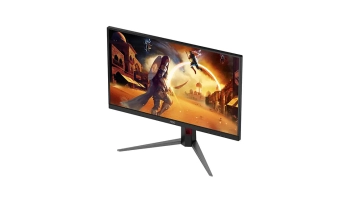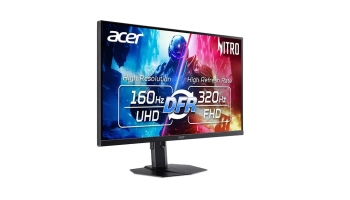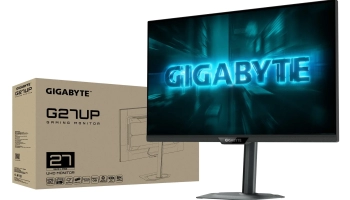
AOC has quietly unveiled the AGON Pro Q27G20SM, a new gaming monitor that combines blazing-fast refresh rates with HDR capabilities. There is no talk of pricing or availability dates yet, but the specifications suggest this display is targeting demanding gamers who also care about visual quality.
The Mini-LED Advantage

What sets the Q27G20SM apart from typical gaming monitors is its mini-LED backlight system. Unlike standard edge-lit displays that struggle with contrast, this monitor packs 1,152 local dimming zones across its 27-inch panel. That’s double the zone count of AOC’s previous AG274QZM model, which featured 576 zones at the same screen size.
More zones mean you get better control over which parts of the screen light up at any given moment. Instead of backlighting entire sections, the monitor can illuminate specific areas while keeping others dark. This dramatically improves contrast ratios and reduces the halo effect (aka “blooming”) that plagued earlier mini-LED displays. For gamers, this means better clarity in shadowy game environments without sacrificing bright highlights.
Specs: AOC Q27G20SM vs AOC AG274QZM
The Q27G20SM is a decent upgrade over AOC’s previous mini-LED gaming monitor, the AG274QZM. Here’s how they stack up:
| Feature | AOC Q27G20SM (New) | AOC AG274QZM (Previous) |
|---|---|---|
| Screen Size | 27 inches | 27 inches |
| Resolution | 2560 × 1440 | 2560 × 1440 |
| Panel Type | Fast IPS | IPS |
| Refresh Rate | 320Hz | 240Hz |
| Response Time | 1ms GtG / 0.3ms MPRT | 1ms GtG |
| Mini-LED Zones | 1,152 zones | 576 zones |
| HDR Certification | DisplayHDR 1000 | DisplayHDR 1000 |
| Peak Brightness | 1,200 nits | 1,200 nits |
| Typical SDR Brightness | 600 nits | 750 nits |
| Color Gamut | 100% sRGB, 99% DCI-P3, 99% Adobe RGB | 100% sRGB, 97% DCI-P3, 97% Adobe RGB |
| USB Hub | No | Yes (4× USB-A, 1× USB-C with 65W PD) |
| KVM Switch | No | Yes |
| Connectivity | 2× HDMI 2.1, 2× DP 1.4 | 2× HDMI 2.1, 1× DP 1.4, 1× USB-C |
| Launch Price | TBA | $899 (now around $400-450) |
The Q27G20SM doubles the local dimming zones and increases the refresh rate by 33%, but loses the USB hub and KVM functionality that made the AG274QZM appealing for productivity users. This might suggest that AOC is positioning the newer model more directly at the competitive gaming market rather than hybrid work-and-play users.
The AG274QZM faced criticism for its zone calibration and warm color temperature out of the box. Whether AOC has refined these aspects with the doubled zone count remains to be seen, but early specifications suggest they’ve at least improved the factory color calibration with tighter Delta E values.
The 320Hz refresh rate at 2560×1440 resolution is obviously a significant jump from the 240Hz that’s become standard for competitive displays, giving you an extra 80 frames per second of visual information, although it will also demand a lot from your hardware. Combined with the Fast IPS panel’s 1ms gray-to-gray response time (or 0.3ms via MPRT), motion clarity should be exceptional.
Traditional IPS panels have historically lagged behind TN and VA in response times, but several recent releases make clear that that this disadvantage has been largely eliminated. You’re getting the color accuracy and viewing angles of IPS without the ghosting that once made these panels a poor choice for competitive gaming.
HDR Performance
With VESA DisplayHDR 1000 certification, the Q27G20SM meets rather strict requirements for HDR performance. Peak brightness is 1,200 nits, while typical brightness sits at 600 nits for SDR content and 700 nits in HDR mode. Note that these aren’t just marketing numbers – DisplayHDR 1000 requires consistent performance across specific brightness patterns and sustained brightness over time.
The monitor’s 1,152 zones work overtime in HDR content. Whether you’re watching the sun break through storm clouds in a cutscene or tracking enemies in a dimly lit corridor, the monitor can simultaneously display deep blacks and brilliant highlights. This capability matters far more in gaming than simple peak brightness figures might suggest.
Color and Calibration
Color coverage is comprehensive: 100% sRGB, 99% DCI-P3, and 99% Adobe RGB. The Quantum Dot enhancement pushes these numbers into professional territory, which is unusual for a gaming-focused display. Factory calibration delivers Delta E less than 1, meaning colors straight out of the box should be very accurate. However, professional users will still benefit from proper calibration.
The 10-bit color depth (8-bit + FRC) provides smooth gradients without the banding that plagues lesser displays. Combined with the wide color gamut, you’re looking at over a billion displayable colors.
Market Context
There’s an increasing amount of gaming monitors that use mini-LED technology. While OLED displays offer superior contrast with per-pixel lighting control, they come with brightness limitations and burn-in concerns. Mini-LED sits in the middle ground, as they offer better HDR than traditional LCDs without OLED’s trade-offs.
Competing displays like the KTC M27T6 also feature 1,152 zones but at a lower 180Hz refresh rate and with a VA panel instead of IPS. The AOC’s 320Hz capability puts it in more direct competition with high-end OLED gaming monitors that cost significantly more but offer 360Hz or even 480Hz refresh rates.
Source(s):





